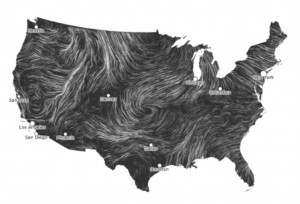What’s not to like about wind power? It’s clean, it’s abundant, and windmills look pretty sleek – unless they’re blighting scenic mountain ridges.
 That’s just one concern that some in Vermont, the country’s second-bluest state, are decrying in their bid for a three-year moratorium on large-scale wind development. Supporters of the measure want the state to take time to figure out how to better manage wind proposals.
That’s just one concern that some in Vermont, the country’s second-bluest state, are decrying in their bid for a three-year moratorium on large-scale wind development. Supporters of the measure want the state to take time to figure out how to better manage wind proposals.
“We shouldn’t permit ourselves to be pressured by corporate, mostly out-of-state entities while we take that time,” said co-sponsor Bob Hartwell, D-Bennington. “We shouldn’t be allowing our cherished mountains, our cherished history to be destroyed while we take that time. We shouldn’t involve ourselves in social upheaval while we take that time. For that reason, a bipartisan effort … is being made to make sure we back up the train, set the reset button and redefine a conversation with Vermont’s history and environmental proactivism involved in the discussion.” (Source: vtdigger.org)
Although a similar bill failed last year, Gov. Peter Shumlin has called for a commission to look at energy permitting in the state. And with every wind proposal come a new group of affected neighbors. Last fall, nearly 200 activists descended on the capitol, issuing a mock “Certificate of Public Harm” to the governor, wind developers and others.
This should get interesting. There’s enough energy in wind to power our warming planet more than 20 times over. But if resistance is coming from a state that’s so blue it has “green” in its nickname, we’re in for a long slog.


